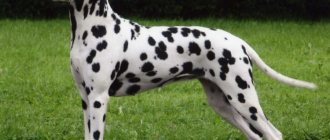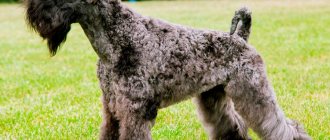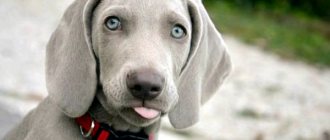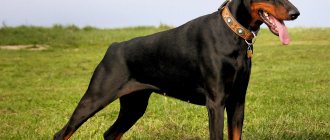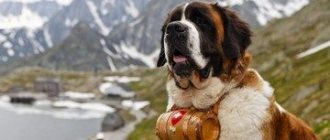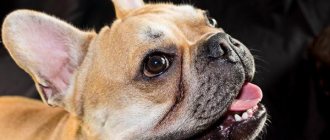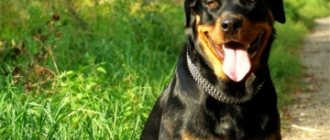Bred in Croatia as hunting and family dogs, Dalmatians have an unusual coat color that makes them impossible to confuse with anyone else. Black spots scattered on a snow-white background are the hallmark of Dalmatians. But sometimes you can hear that a brown or even black representative of the breed was seen somewhere. Could this be true? Let's figure it out.
Origin story
The history of the breed remains unknown today, causing controversy among professional breeders. Traditionally, Dalmatia, which belongs to modern Croatia, is considered the place where Dalmatians were bred. The animals were born by crossing a Great Dane and an English Pointer. Archival documents from the 18th century confirm that in this territory breeders were actually breeding dogs with rare colors. Back then they were used mainly for hunting.
There is a theory according to which the first Dalmatians appeared in Ancient Egypt. This is confirmed by the drawings found on the pyramids. They depicted dogs resembling modern Dalmatians in appearance. This version is supported by their ability to tolerate heat well in the summer.
Since the beginning of the 18th century, dogs began to be used as guards, protecting carriages from robberies and wild animals. Therefore, the animal was called a carriage dog.
Many dog lovers do not know the correct name of the breed: Dalmatian or Dalmatian. The official name is Dalmatian, but at the level of spoken language the first option has taken hold.
Interesting Facts
Dalmatians are amazing and unusual animals. Interesting facts about dogs:
- dogs have an expressive voice: they make sounds of different timbres, showing the owner’s mood and needs;
- Dalmatians can smile and are considered the best companions;
- dogs love to swim and dive without fear;
- in the USA there is a nursery where dwarf Dalmatians are bred (the breed does not officially exist; professionals believe that mini-dogs are bred from inferior specimens that are stunted);
- Dalmatians love warmth and can easily tolerate heat, but even at -20 they feel great and do not freeze (at low temperatures, it is recommended to wear overalls for long walks).
Living under the same roof with a Dalmatian, the owners will constantly have to learn a lot of new things about their pet.
It is not known for sure, but it is believed that the Dalmatian was created by crossing a marbled Great Dane with an Istrian pointer.
Description of the breed
Representatives of the breed are quite large animals with great strength and endurance. Their height can reach 61 cm, and their weight varies from 24 to 32 kg. The Mini Dalmatian does not fit into the standard, since the animal belongs to the category of large dogs. Therefore, dwarfism is considered a disqualifying defect.
The breed description is as follows:
- The muzzle is long, gradually tapering towards the nose. The neck is long. The ears are set high and hang down to the sides of the muzzle.
- The stomach is tucked, the limbs are long and strong.
- The coat is short and hard to the touch. The long-haired Dalmatian is occasionally found, but it is a fairly rare species.
- The tail is small, usually hangs calmly, and at the moment of movement or excitement is raised to the level of the hock joint. The breed standard implies a straight tail, curling is unacceptable. They have a well-shaped belly, long muscular limbs, and a decent length neck.
The color of Dalmatians does not differ in variety. Acceptable varieties include:
- Black spotted dogs. This type of pigmentation is characterized by a black nose and dark iris of the eyes. A dog with blue eyes or heterochromia is not allowed for breeding, as this is considered a disqualifying defect.
- Dalmatians with brown spots. In this case, the pigmentation of the spots is not completely black, but dark brown. Such animals are characterized by light brown eye color and the same color of the nose.
It is noteworthy that Dalmatian puppies are born completely white. Thus, the Dalmatian without spots is not an invention, but a natural feature of the breed that manifests itself in infancy.
Character
Animals behave in a truly aristocratic manner: they have noticeable pride and a sense of their own importance. But this does not devalue the ability of dogs to be truly responsive and kind to people. This manifests itself well in relationships with children. Dalmatians will never allow themselves to offend a child, they will always be affectionate and patient. Their innate courage tells them to always protect the small and weak.
Representatives of the breed are very active, which, combined with endurance, gives them the ability to cover long distances. Today, Dalmatians no longer have strong guard qualities, so you should not expect them to be aggressive towards strangers. But if the owners are in danger, the animal will be able to prove itself as a protector.
Dalmatians are very attached to their owners and are not shy about showing love. They absolutely cannot stand loneliness and can either become despondent or play dirty tricks. But dogs can compete with other animals, as they have a strong leadership nature. This behavior is especially noticeable in males; females are more patient in this regard.
Comparison with other breeds
Often dog lovers are faced with questions about which breed is more suitable for a family, provided that they are very similar. For example, such disputes unfold among those who cannot choose: Dalmatian or Labrador. Both dogs are friendly, sociable and will make excellent family companions. But they differ in their content and character.
Thus, the Dalmatian's coat is shorter than that of the Labrador, as a result of which shedding will be less intense. Labradors are active dogs that are best kept in a private home. Dalmatians also require physical exercise; keeping them in an apartment is possible. In terms of learning, Labradors are considered more capable and are more likely to learn new information.
There is a mixture of Dalmatian and Labrador, which inherits from each breed positive qualities in the form of friendliness and extraordinary intelligence. However, mixed breed is considered undesirable from a genetic point of view: crossing different breeds can lead to unexpected consequences.
Dalmatians and Dobermans are also often compared. As a rule, owners prefer to adopt Dalmatians for families with children: their character is more friendly and sociable, while some Dobermans do not like to have contact with small children. They are more individualistic and require respect, while Dalmatians can tolerate a child's antics. But if guarding qualities become the determining criterion, Dalmatians are, of course, inferior to Dobermans, whose characteristics imply the presence of innate guarding skills.
Dalmatian mixes
The concept of "mixed breed" means a mixture of breeds; it refers to dogs of unknown genes. When the genes of the parents of a mixed breed are mixed, the dog produces a “cocktail” of four dogs, so it is impossible to predict which breed traits will dominate in such a mixed breed.
Dalmatian mixes can come from completely different breeds. For example, mixing with dachshund, labrador, husky and husky.
The advantage of such “new” breeds is their cheapness, since they lack the purity of genes, and they have no value on the dog market. They are also distinguished by excellent health, since they do not inherit genetic diseases, unlike purebred individuals.
The downside is that it is impossible to predict the future appearance and size of the puppy. Even if both parents are known, it is impossible to predict which of them the dog will be more like. In addition, Dalmatians are born white, and spots can appear throughout life, the dog's appearance will also change as it grows.
The main advantage of the Dalmatian breed is that it will forever become your friend and companion, it is always ready to be with its owner : walk, run, ride next to him. Active games and walks are the best entertainment for such dogs. Smart, energetic, restless - that's all about the Dalmatian.
Care and maintenance
Dalmatians are very sociable, so keeping them in an enclosure is strictly not recommended. The optimal place for them will be a city apartment or a private house, where they will have the opportunity to regularly communicate with the owners. At the same time, animals require great physical activity: dogs need to be walked at least 2 times a day for 1.5 hours.
Caring for a Dalmatian is not difficult. You need to pay attention:
- Wool. The breed has a short coat; brushing it once a week is sufficient.
- Claws. They shorten as they grow. You can notice that the claws are quite branched by the white part of the nail, coming after the pink one (this is a blood vessel). The further the nail is from the blood vessels, the sooner it needs to be cut.
- Ears. The inside of a dog's ear is hidden, so they need to be constantly inspected for dirt. You need to remove wax using a cotton pad slightly moistened with warm water.
- Teeth. Cleaning should be done 2-3 times a week using a special product. If the animal eats dry food, the procedure can be carried out once a week, since the plaque is removed when eating dry food.
- Bathing. Dalmatians are clean, so they do not need frequent washing. It will be enough to do this 2 times a year.
The breed is well suited for people leading an active lifestyle. Jogging, cycling - your pet will be happy to keep you company. Such physical activity will help keep your Dalmatian in good shape and satisfy his need for movement.
Feeding
If owners choose industrial feed as their main diet, the brand should be no lower than premium. You need to pay attention to the composition of the food intended for the dog. There should be no more than 22% protein, and fat within 10%.
Feeding natural products may be unsafe, as Dalmatians are prone to diseases that impair metabolism. Animals are also prone to urolithiasis, which can be avoided with properly selected food.
Not every menu is suitable for Dalmatians: they have congenital food allergies to many foods. Therefore, it is worth introducing new products gradually. They need to be given in small portions in order to monitor the dog’s reaction and remove them from the diet in time if necessary.
The main thing on a dog’s menu should be meat, making up at least 1/3 of the total diet. The meat should not be fatty; the best options would be beef, rabbit, and horse meat. Twice a week it can be replaced with offal (liver, heart, etc.). Cereals and fermented milk products should make up no more than 1/4 of the daily diet. Cottage cheese, yogurt or kefir can be eaten daily, but little by little.
The share of vegetables in the diet should be about 20%. Some of them are good:
- cucumbers;
- cabbage;
- carrot;
- pumpkin.
Pets happily eat fruits, which are considered a treat. Therefore, they can be used for reward during training.
What to feed a puppy
Once the puppy is in a new home, you should not radically change its diet. For the first 1-1.5 weeks it is better to feed him the same thing that the previous owners fed him. Puppies grow very quickly, so the daily amount of food should not be inferior to that which is fed to an adult dog.
When changing baby teeth, babies are prohibited from chewing bones. At this time, it is worth feeding the puppies liquid food: cereals, soups, jellied meat. To keep your baby's bones strong, the diet must include cottage cheese, rich in calcium. Meat is allowed to be given the same as for adult Dalmatians, but it should be boiled and thoroughly chopped into pieces. This will help the puppy digest the food he eats better.
Training and education
Raising an animal must be done immediately when it gets into the house. On the very first day, you need to establish rules that the pet will adhere to for the rest of its life: do not beg for food, do not bite during play, do not sleep in the same bed, etc. It is extremely difficult to retrain an adult dog.
The main rules that should be followed during training:
- unanimity (the whole family must demand compliance with the established rules);
- subsequence;
- persistence.
You can reward your pet for following commands by giving him a treat. You can scold for pranks, but never use force.
The first command that a puppy must learn is “no”. A Dalmatian who has mastered the command will grow up obedient and pacify his restless character. If the owner does not demand constant execution of the command, the puppy may take advantage of this and stop obeying the person.
Mating, pregnancy, childbirth
The female comes into heat long before she is actually ready to bear puppies. Typically this occurs 14-25 days twice a year. The best time for conception is considered to be days from 9 to 14. At the moment of readiness for mating, the bitch’s discharge becomes lighter, and when stroked, she begins to move her tail to the side. If this is the first heat, the bitch should be bred no later than the 13th day.
On the day of mating, the girl is brought to the male dog's territory. Animals need time to get to know each other and, if circumstances permit, to play and run around with each other. The mating itself should be carried out in the presence of the owners of both pets.
To increase the likelihood of conception, it is best to repeat the meeting a day after mating.
The result of mating is visible approximately 2 weeks after the dogs meet. The bitch is not characterized by toxicosis, mood changes or food refusal. During pregnancy, the nipple halo and the back of the body expand. Later, you can notice a rounded belly.
The duration of labor directly depends on the number of puppies, as well as the time of their appearance. Usually the interval between the birth of a litter is 10-30 minutes. For the last puppies, this time may increase to 2 hours. If the birth is difficult, the owner can help the dog by carefully pulling out the already emerging puppy while pushing. Newborns are born in a bladder, which is either chewed by the dog or cut by the owner if the animal is unable to do so.
Possible diseases
These dogs are more prone to genetic diseases than any other. But there are also acquired ailments, among which the leading ones are problems with the kidneys, skin and heart. The scourge of the Dalmatian breed is urolithiasis.
As in humans, the urine of these animals produces uric acid, not urea. Signs by which one can determine that the disease has struck the dog are lumbar pain, due to which the animal does not allow petting or touching this part of the body.
The dog stops jumping and standing up using its hind limbs. It's hard for him to settle down. The attacks come in periods, last for a couple of days, and after a while they repeat again. Soon the condition worsens.
Dalmatian puppies are born white without spots
If the disease is neglected, it can lead to dire consequences. As a preventive measure, drinking regimen and physical activity, including long walks, are very important. Another vulnerable spot is the skin. These include dermatitis, allergic reactions, and even baldness.
In case of any suspicious reactions, do not neglect the services of a veterinarian. Timely diagnosis will help avoid serious complications. The lifespan of Dalmatians depends on care, nutrition and the degree of stress. In a good situation, the dog will delight its owners for up to 13-14 years.
How to choose a puppy
The optimal age of a puppy when purchasing is 1.5-2 months. When choosing, you must make sure that the animal meets the following parameters:
- nose color black or dark brown;
- the tail is straight, does not bend into a ring and does not fall over the back;
- the bite is not too tight.
When buying a puppy, it is worth checking it for deafness, as Dalmatians are susceptible to this disease. To do this, you can simply clap your hands and see if there is a reaction from the baby. You can also check the puppy's activity and physical capabilities. Just throw a small ball and see how it reacts. Normally, the puppy should be interested, playful and may even try to bring the toy back. Fear and indifference towards the game are considered undesirable.
What to name a dog
Dalmatians are truly elegant dogs, so the name may reflect their sophisticated appearance or ancient origins. Boys can be called by the following names: Hans, Otto, Augur, Ron, Tito, Lord, Archie, etc. Nicknames for girls: Abba, Daphne, Medi, Yuna, Yara, Lady, Ramona, etc.
Pros and cons of the breed
| pros | Minuses |
| Sheds little | No pronounced security and watchdog qualities |
| Gets along well with children | May try to dominate other animals |
| Easy to care for | Requires a lot of physical activity |
| Possibility of living in an apartment | Be stubborn when trained |
| Suitable for agility |
Deafness
The most terrible type of defect in Dalmatians is deafness - although the dog may not have any defects in appearance. Deaf puppies may not be recognized by novice breeders because... in other respects, they are the same as their hearing counterparts, only they do not react to sound, which is compensated by a more attentive gaze, reaction to vibration, etc. Often such puppies are euthanized when this defect is discovered.
Important! The ear canal opens in puppies at approximately 14 days. But a bad reaction to sound is not yet a sign of deafness, because... Depending on the sound, psyche and other factors, the puppy may hear the sound and react to it in a subtle way. Unfortunately, in Russia at the moment there is no test (BAER test) that gives an unambiguous answer - whether the puppy can hear or not.
author: Alena Artamonova, nursery “Alartline” (c) reprinting of material without permission of the author is prohibited
Source
Where to buy and price
Nurseries where you can buy Dalmatians:
- New Game (Moscow);
- From Nevsky Islands (St. Petersburg);
- History Maker (Nizhny Novgorod).
The price of a Dalmatian puppy primarily depends on the class to which it belongs. If owners just want to buy a pet, the cost can be around 5,000-8,000 rubles. A puppy suitable for breeding will cost 9,000-15,000. A show-class pet intended for exhibitions costs about 20,000 rubles.
Dalmatians are amazing pets that fit perfectly into an active, friendly family. Animals like to be the center of attention, receive affection and recognition. In return, they are ready to give their devotion and love.



